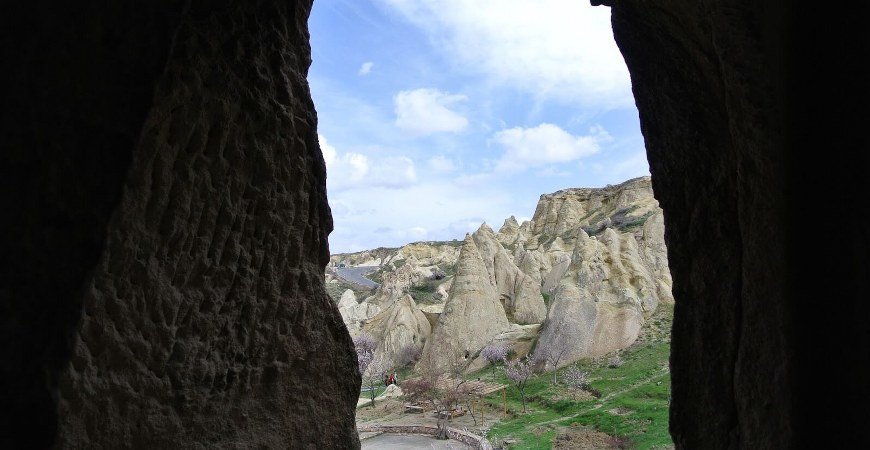
Visit Sights Around Cappadocia Turkey
Visit Sights Around Cappadocia Turkey,
Hacibektas
Formerly known as Suluca Karahoyuk, this town is 45 km north of Nevsehir. The excavations show that it was occupied by Hittites, Phrygians, Romans, and Byzantines. Haci Bektas Veli came here in the 13th century from the province of Khorosan and established the monastery which came to be an important dervish center. The food was cooked in large quantities and he distributed it to the poor and hungry. While doing this, he took the opportunity to teach the principles of Islam and thus gained a great following among the common people. He is buried here and consequently, the name of the town was changed to Haci Bektas. In the 14th century, a place of suffering for religious purposes was built and later expanded. The first restorations were done in the 19th century. From 1954-64 the General Directorate of Foundations carried out extensive repairs and then opened it to the public as a museum. August 16-18 every year is the Festival of Haci Bektas.
Gulsehir And Aksaray
Gulsehir is set on the skirts of Kepez Hill at the side of Kizilirmak Cengeli, which is 20 km northwest of Nevsehir. It is thought that this city was founded by Hittites (II millenium before Christ) by the name of Zoropassos. Then, the name was changed by Greeks to Arabusun. After the Turkish Republic was formed, this place was called Gulsehir. It is now a 5.000 inhabitants town of Nevsehir. When you come two kilometers from GuIsehir towards Nevsehir, you meet hundreds of early Christian hiding places which are carved in the rocks and have half-valley shapes. Its called Aciksaray (Open air palace). The pictures, dated VI and VII centuries here are quite damaged yet worth to be seen. At the same place, there’s the St. John church and a 200 meters tunnel joining the two valleys. At Sigirli, Gumuskent, Sivasa and Gostesin villages of Gulsehir there are some underground towns not opened for visit. At Sivasa village there is also a human relief carved on a rock by Hittites, and 300 meters west there is a hierogliphic inscription carved on basalt rock again by Hittites. This is not all of Sivasa; there is also a Byzantine church on the west of the village, carved on a rock. But the frescoes of Jesus, Virgin Mary, and other Saints are partially damaged.